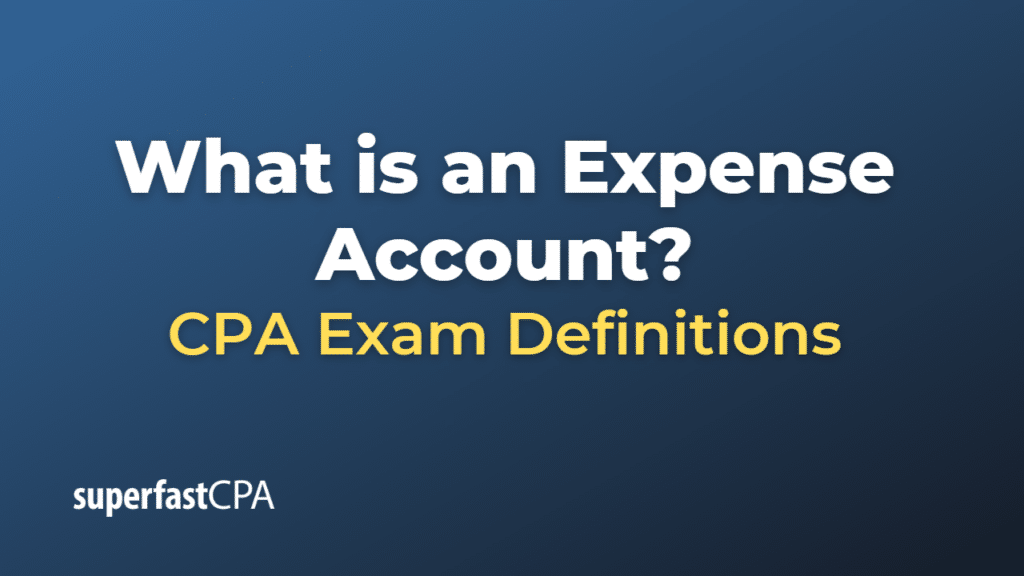Expense Account
An expense account is a record in the general ledger used to sort and store expenses incurred by a business. Each different type of expense typically has its own separate account. For example, a company may have separate expense accounts for utilities, rent, salaries and wages, marketing, depreciation, and interest expense, among others.
When a company incurs an expense, it will record a debit in the appropriate expense account and a corresponding credit to the account that represents the source of payment (like cash or accounts payable). The total of all expense accounts are then reported on the income statement for the reporting period, and the balances in these accounts are reset to zero at the end of each accounting period in preparation for the next.
The purpose of using different accounts for different types of expenses is to keep organized records and facilitate financial analysis and management decision-making. For example, managers can review expense accounts to understand where the company’s money is going, control costs, budget for future expenses, and assess the company’s financial performance.
Example of an Expense Account
Let’s consider an example of a small business, say a bakery, and how it might use different expense accounts:
- Rent Expense Account: This account is used to record the cost of renting the space for the bakery. If the monthly rent is $2,000, then the bakery would debit (increase) the Rent Expense account by $2,000 and credit (decrease) the Cash account by the same amount each month.
- Salaries and Wages Expense Account: This account is used to track the money paid to employees. If the total payroll for the month is $8,000, the business would debit the Salaries and Wages Expense account by $8,000 and credit the Cash account by the same amount.
- Utilities Expense Account: This account captures the cost of electricity, water, and other utilities. If the bakery’s utility bill for the month is $500, it would debit the Utilities Expense account by $500 and credit the Cash account by $500.
- Supplies Expense Account: This account records the cost of baking supplies like flour, sugar, and yeast. If the bakery spent $1,500 on supplies during the month, it would debit the Supplies Expense account by $1,500 and credit the Cash account by $1,500.
- Depreciation Expense Account: This account captures the cost of using long-term assets like baking ovens and mixers over time. Let’s say the monthly depreciation cost for these assets is $200, then the bakery would debit the Depreciation Expense account by $200 and credit the Accumulated Depreciation account by the same amount.
At the end of the month, these expense accounts would be summed up and reported on the bakery’s income statement. For example, if these were the only expenses, the total expenses for the month would be $12,200 ($2,000 rent + $8,000 salaries and wages + $500 utilities + $1,500 supplies + $200 depreciation). This total would be deducted from the bakery’s revenues to calculate its net income for the month. At the beginning of the next month, these expense accounts would be reset to zero, ready to record the new month’s expenses.













